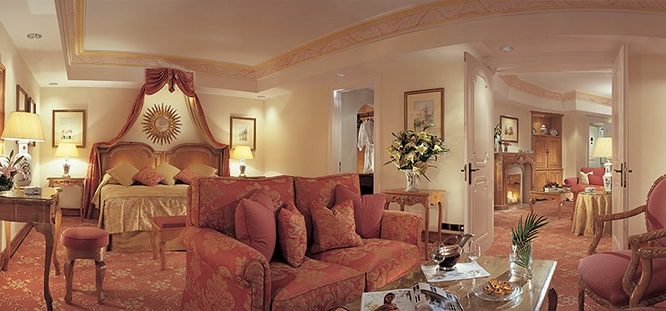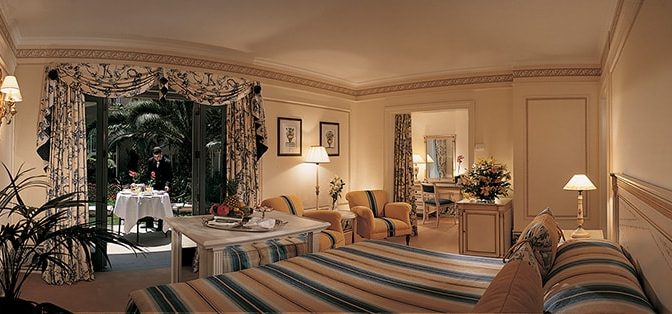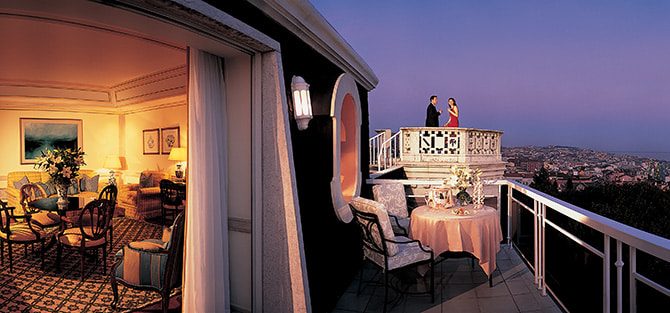Lisbon at a Glance.
A beautiful and fascinating city: it embodies the spirit of the Mediterranean and at the same time evokes the vastness of the Atlantic and of the unknown lands beyond it. A destination where art, history, landscape, tradition and (not a secondary factor) excellent cuisine and just as good wines, welcome the visitor who fatally remains enchanted. And when it is time to leave, he can only experience a subtle melancholy: the one that is represented in the traditional Portuguese music, namely in Fado.
The Olissippo Lapa Palace Hotel is an excellent opportunity to stay in Lisbon and breathe those very typical atmospheres we talked about. Set on the top of a hill, in an elegant neighborhood with consulates and embassies, it was founded in the 19th century as a noble palace for the Valenças family. A large tropical garden surrounds it and from its privileged position enjoys wide views of the entire city.

The original building, built in the second half of the nineteenth century, was transformed into a hotel in 1992 and acquired by the Olissippo Hotels group in 2009. Today, there are 109 rooms and suites available to guests, both in the original building and in subsequent wings (Garden Wing and Villa Lapa) added during the transformation. Refined luxury and a relaxing atmosphere define the different environments, embellished with remarkable artistic aspects resulting from a careful restoration.

Comfort and services are naturally at the height of a hotel of this class. The hotel has two swimming pools (one outside in the beautiful garden and one inside the Lapa Palace SPA), two restaurants (the Lapa Restaurant where you can enjoy refined dishes based on the best of traditional Portuguese and Mediterranean cuisine and the poolside Le Pavillion, , open during the good season), the Rio Tejo Bar (among other things, famous for its wide selection of over 40 different types of tea) and splendid rooms for meetings, events or banquets.

A little curiosity: the scent that discreetly welcomes those who enter the Lapa Palace dates back to one used by Queen Maria Pia of Savoy, daughter of Victor Emmanuel II and wife of King Louis I. It is called “Eau de Portugal” and has been reproduced in collaboration with Helleboro, thanks to the discovery of the original recipe.
Excellence, after all, can also be seen in small details.
Texts © iBESTmag – Images Courtesy by Olissippo Lapa Palace – Reproduction Forbidden








